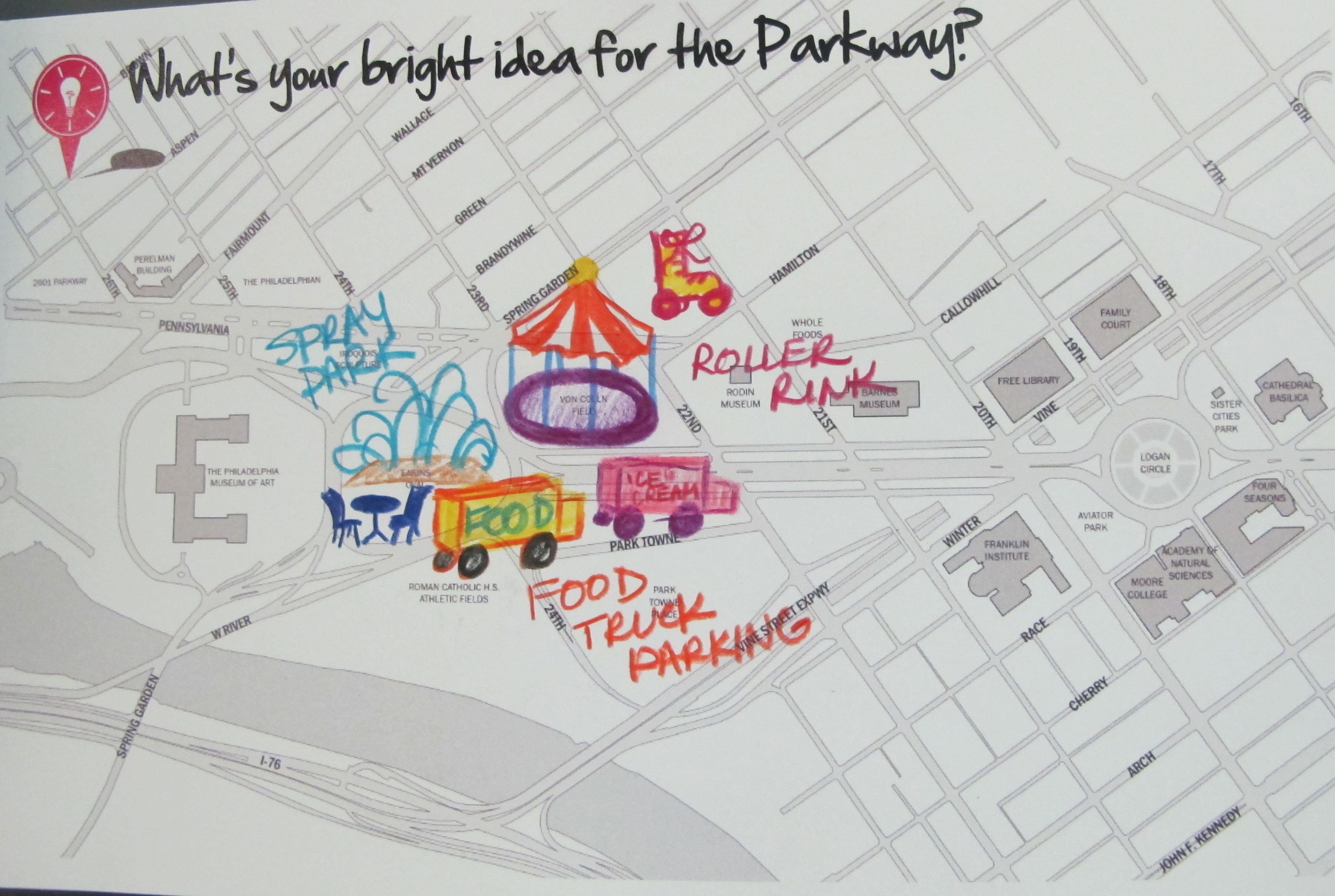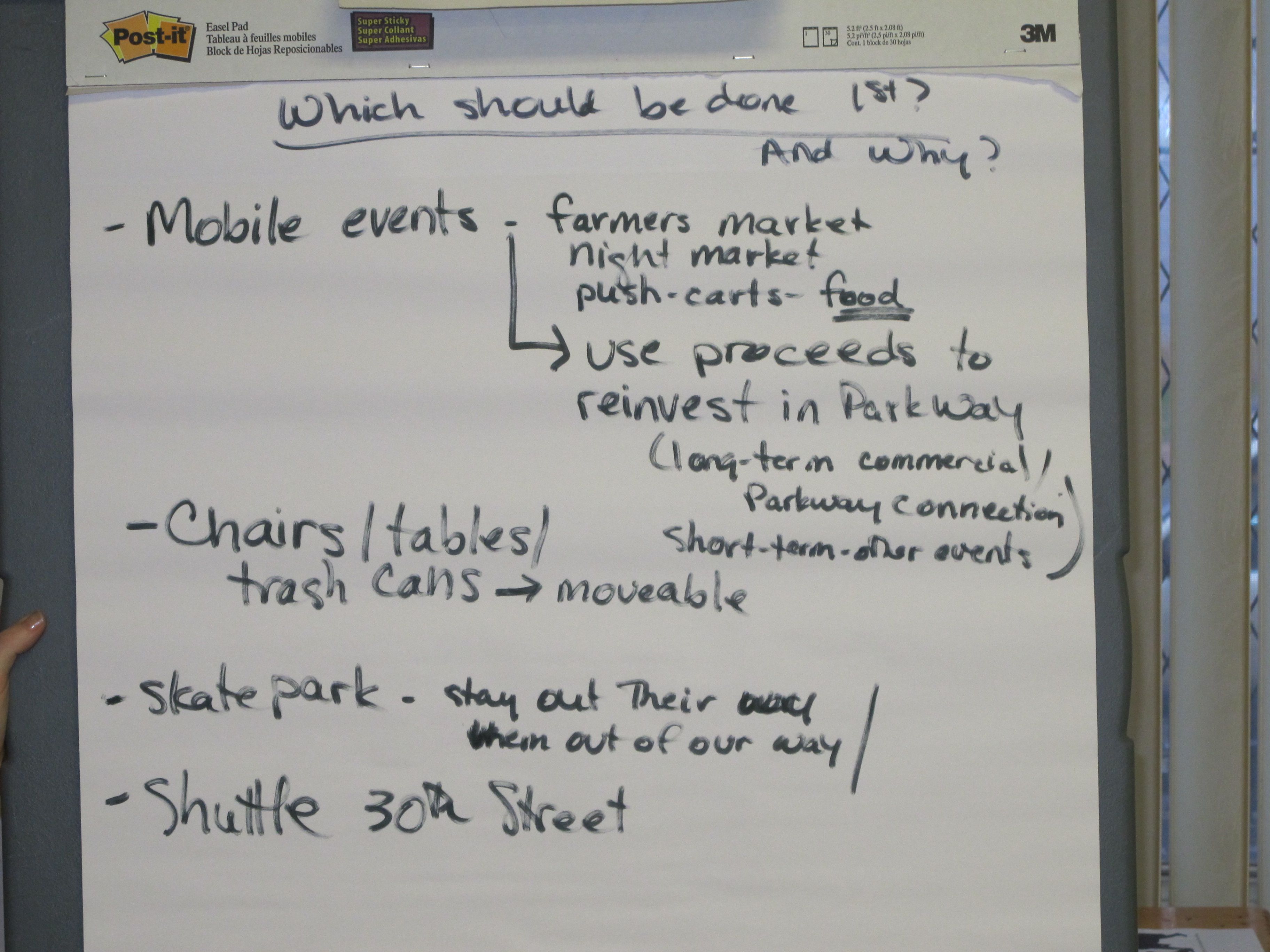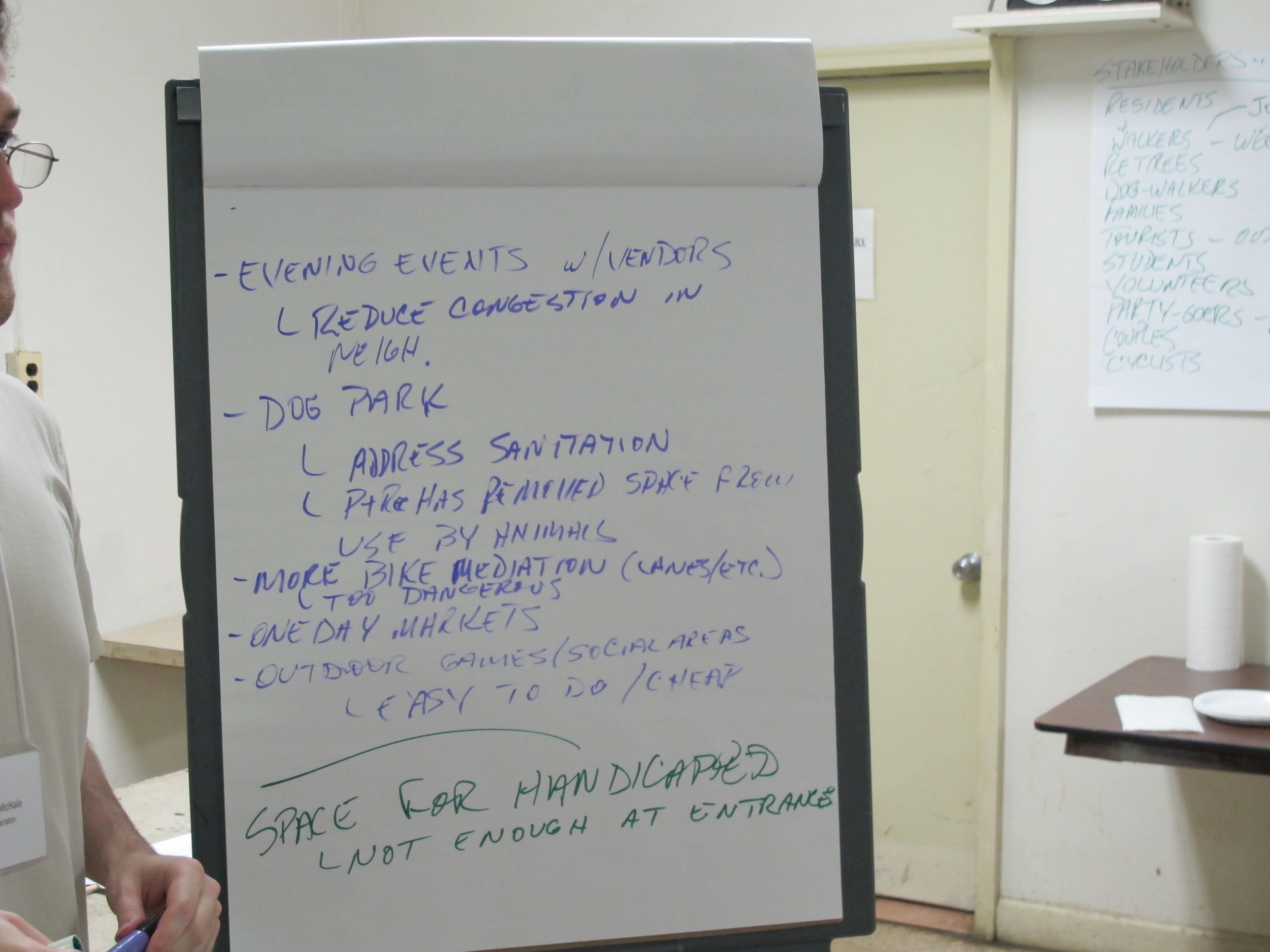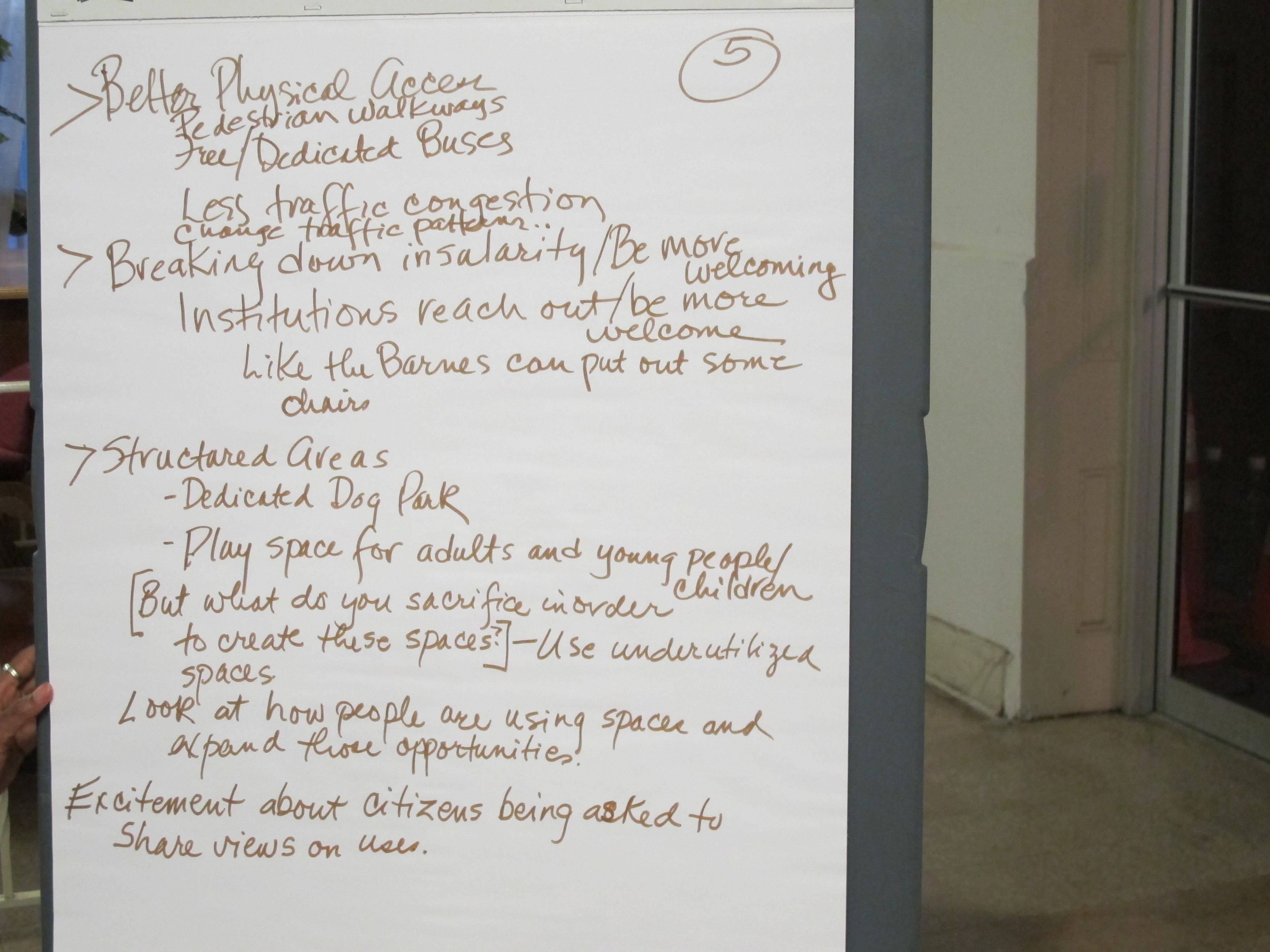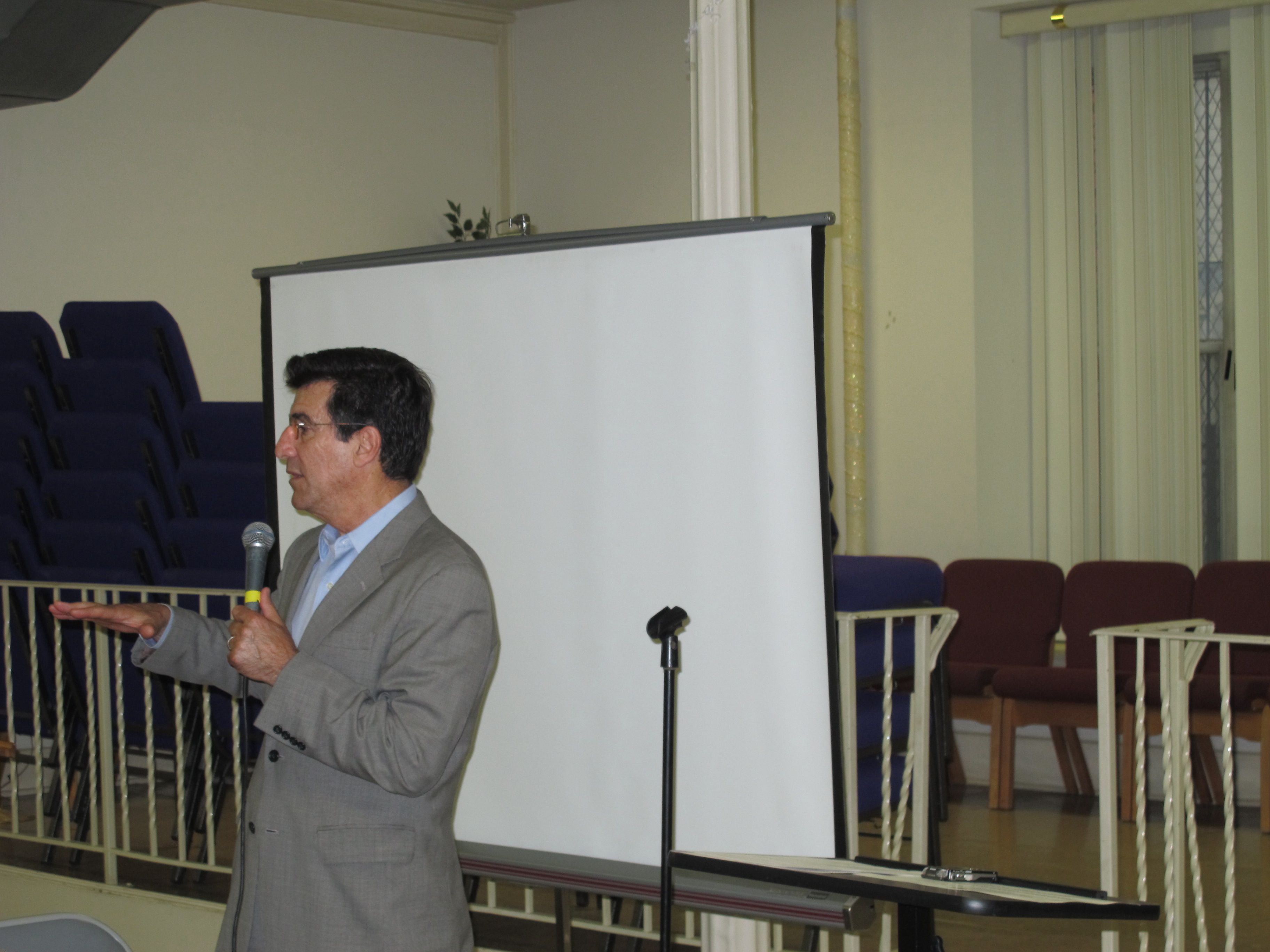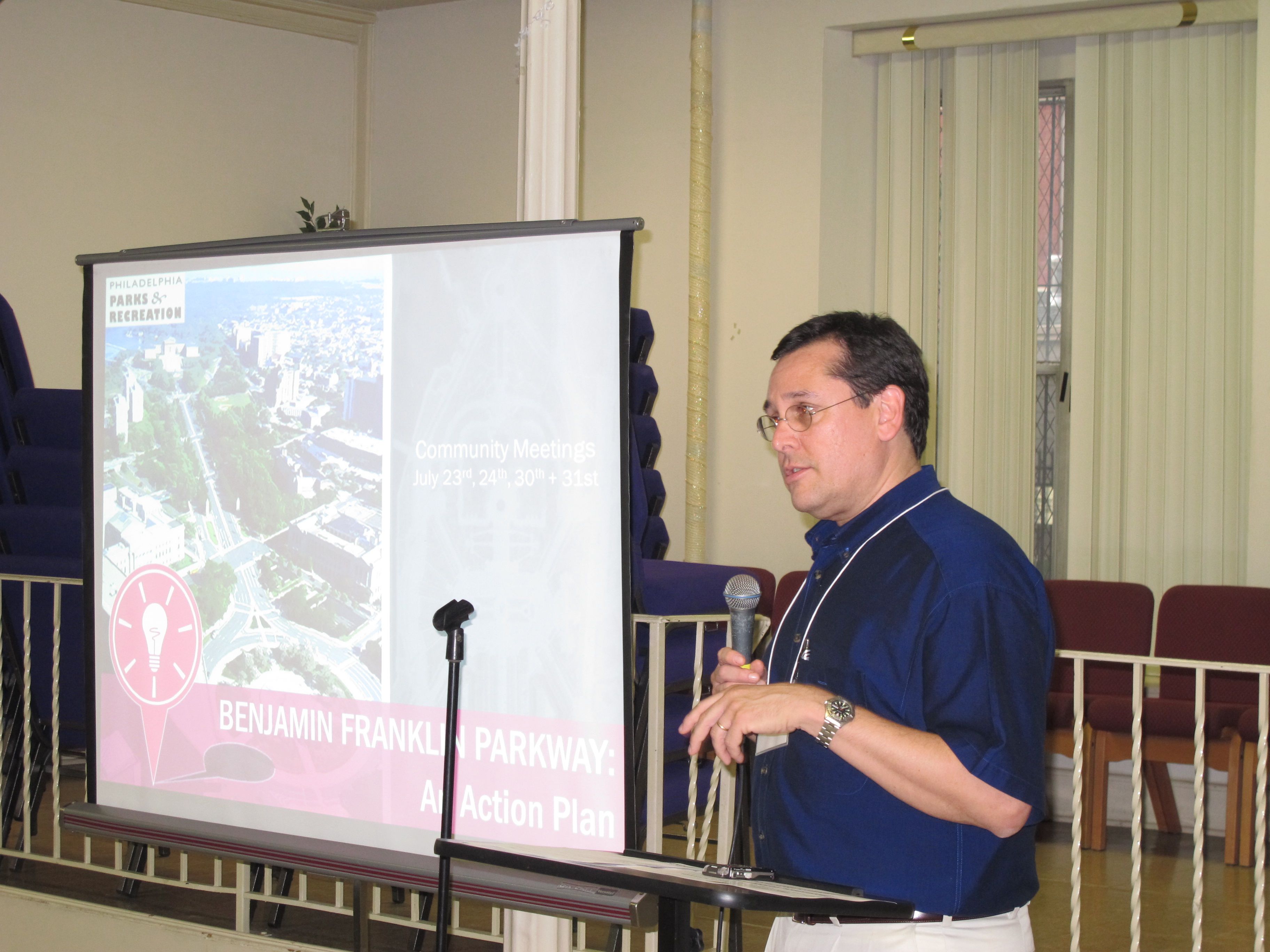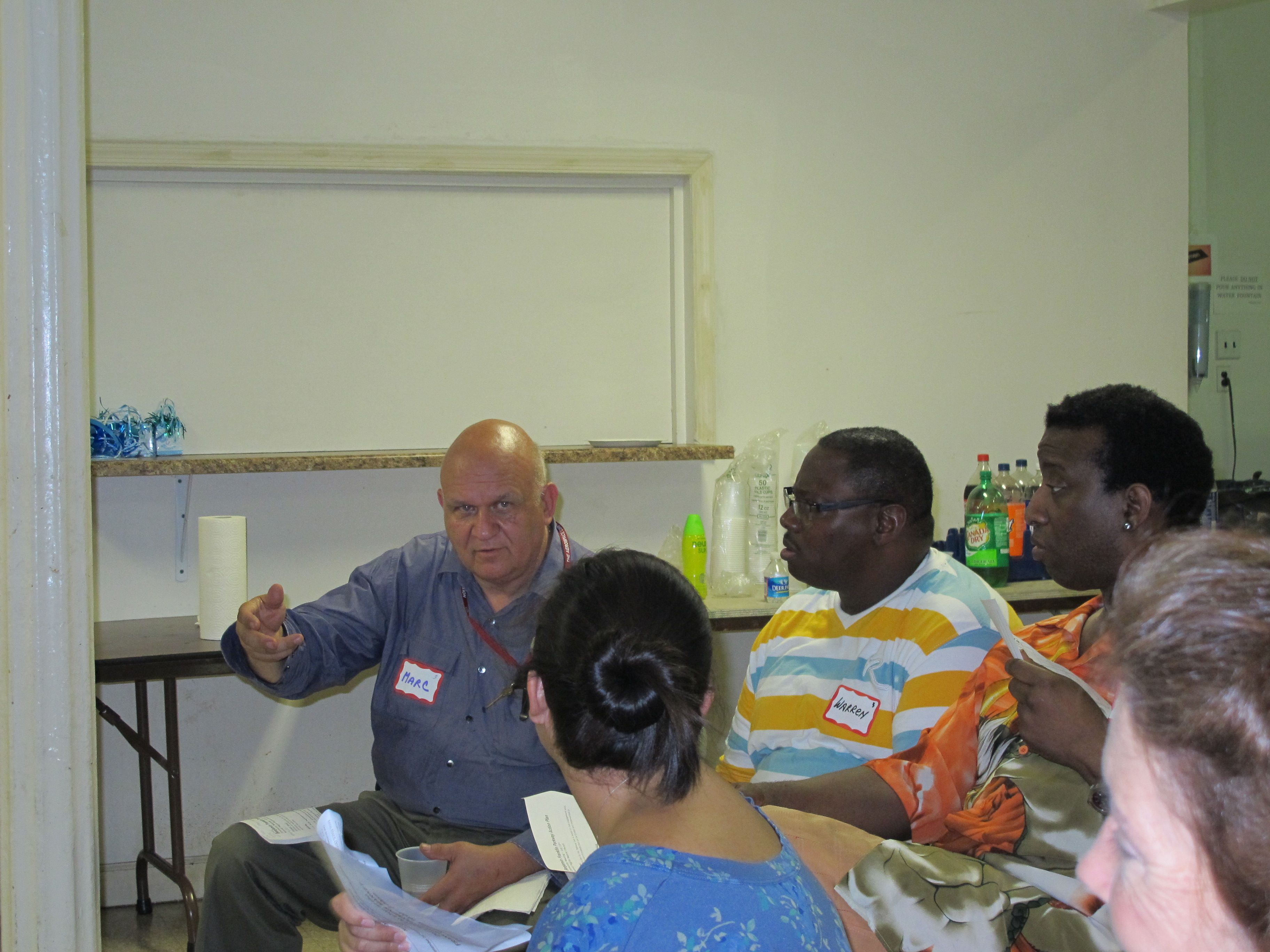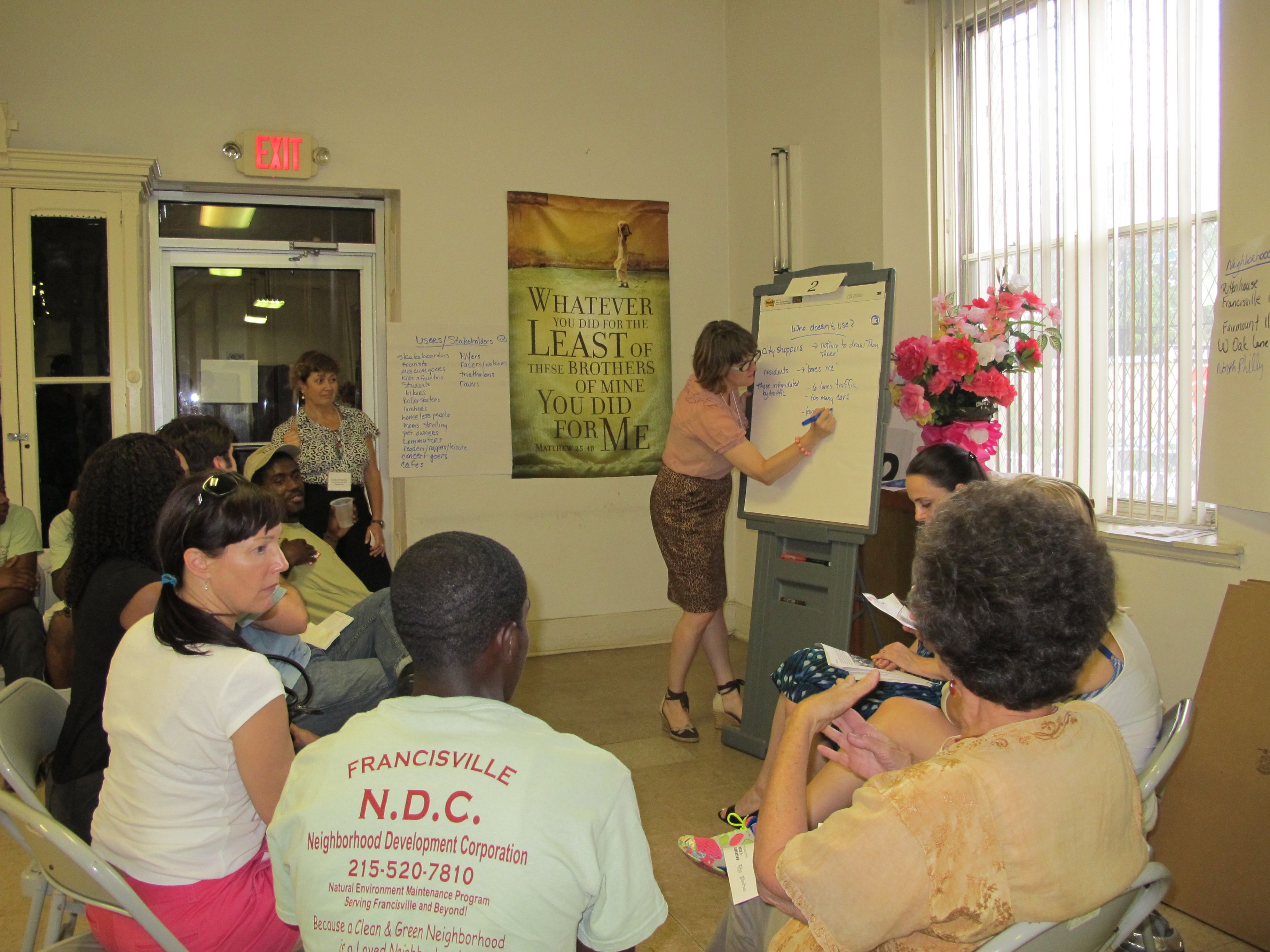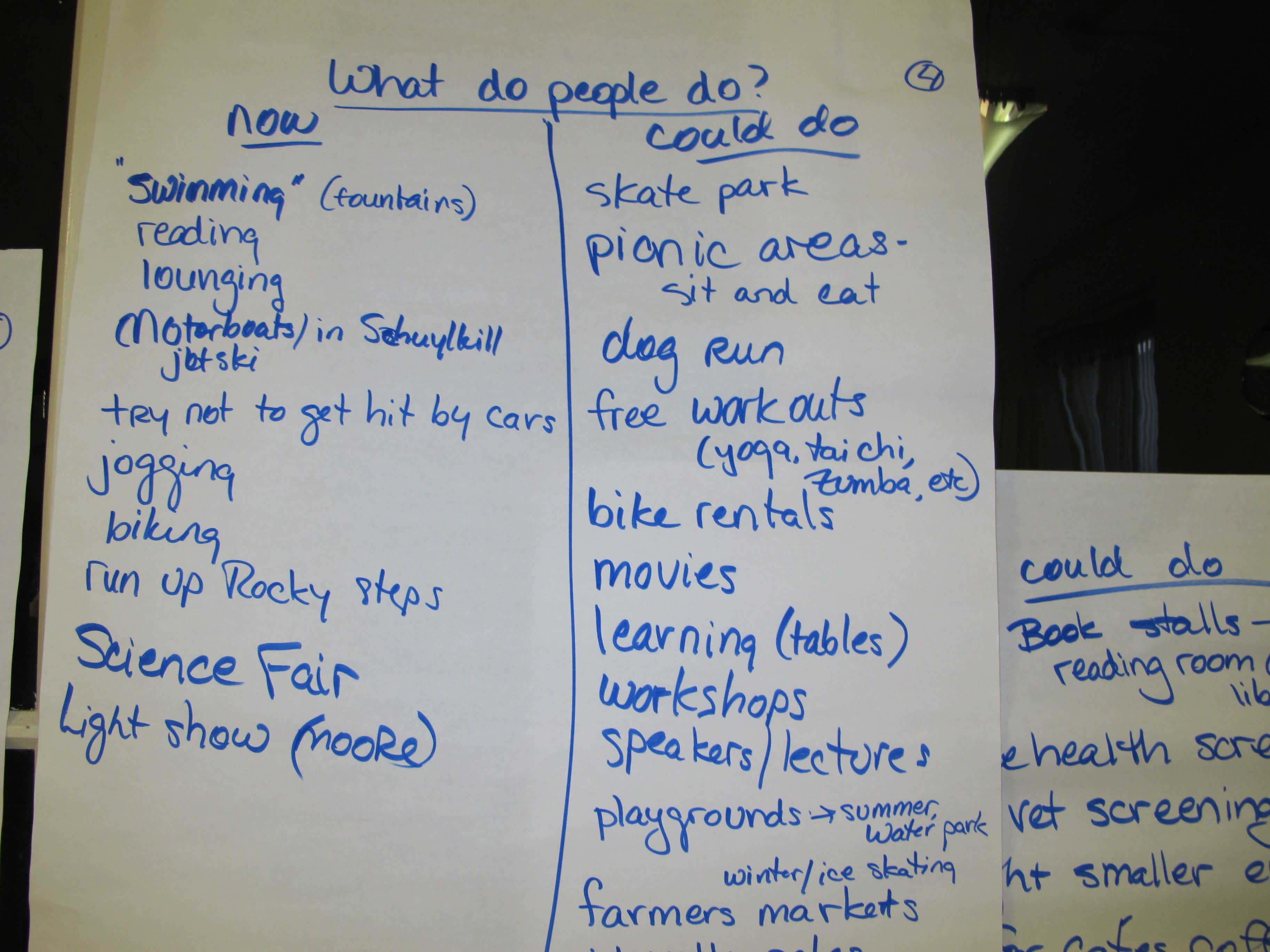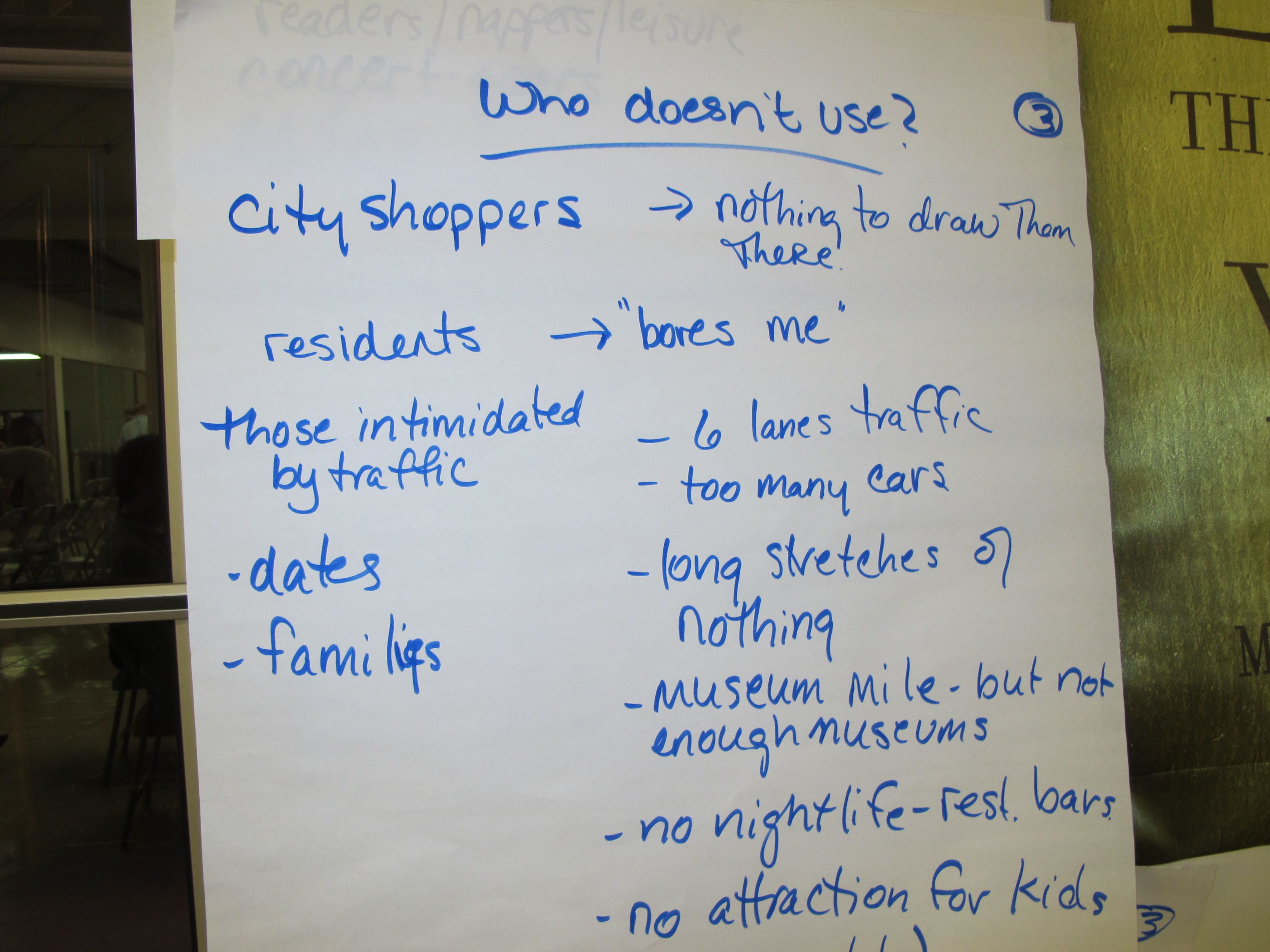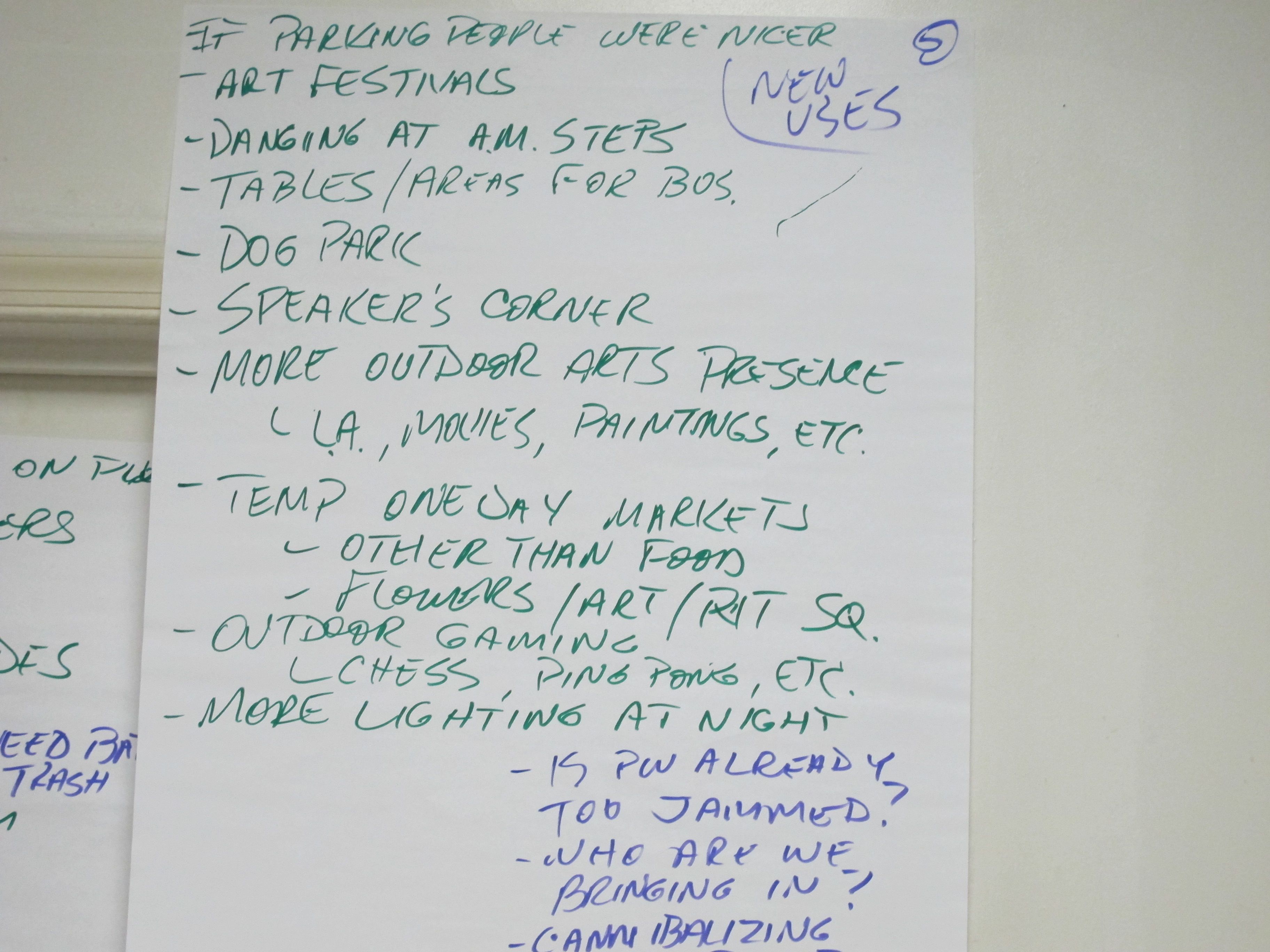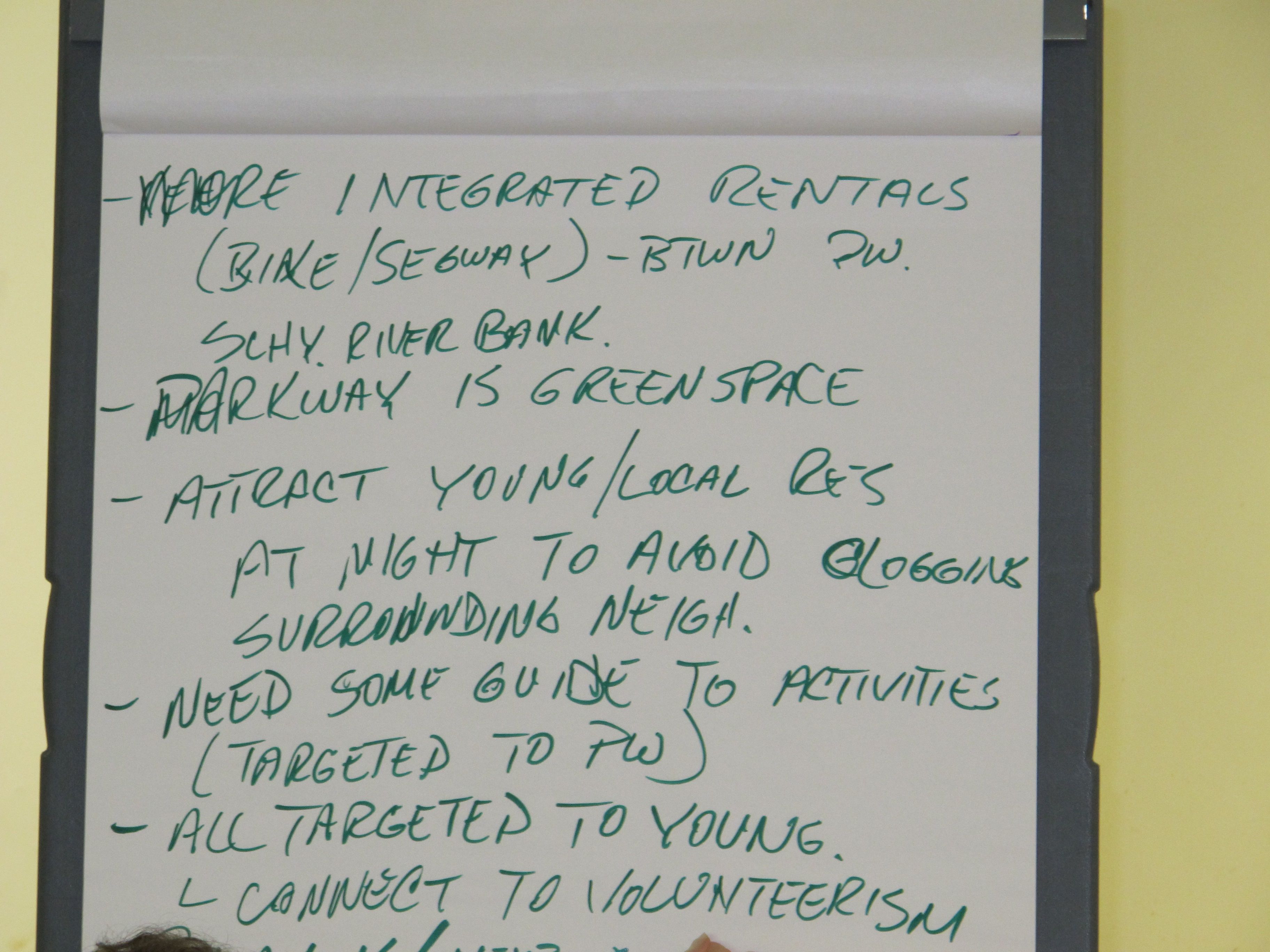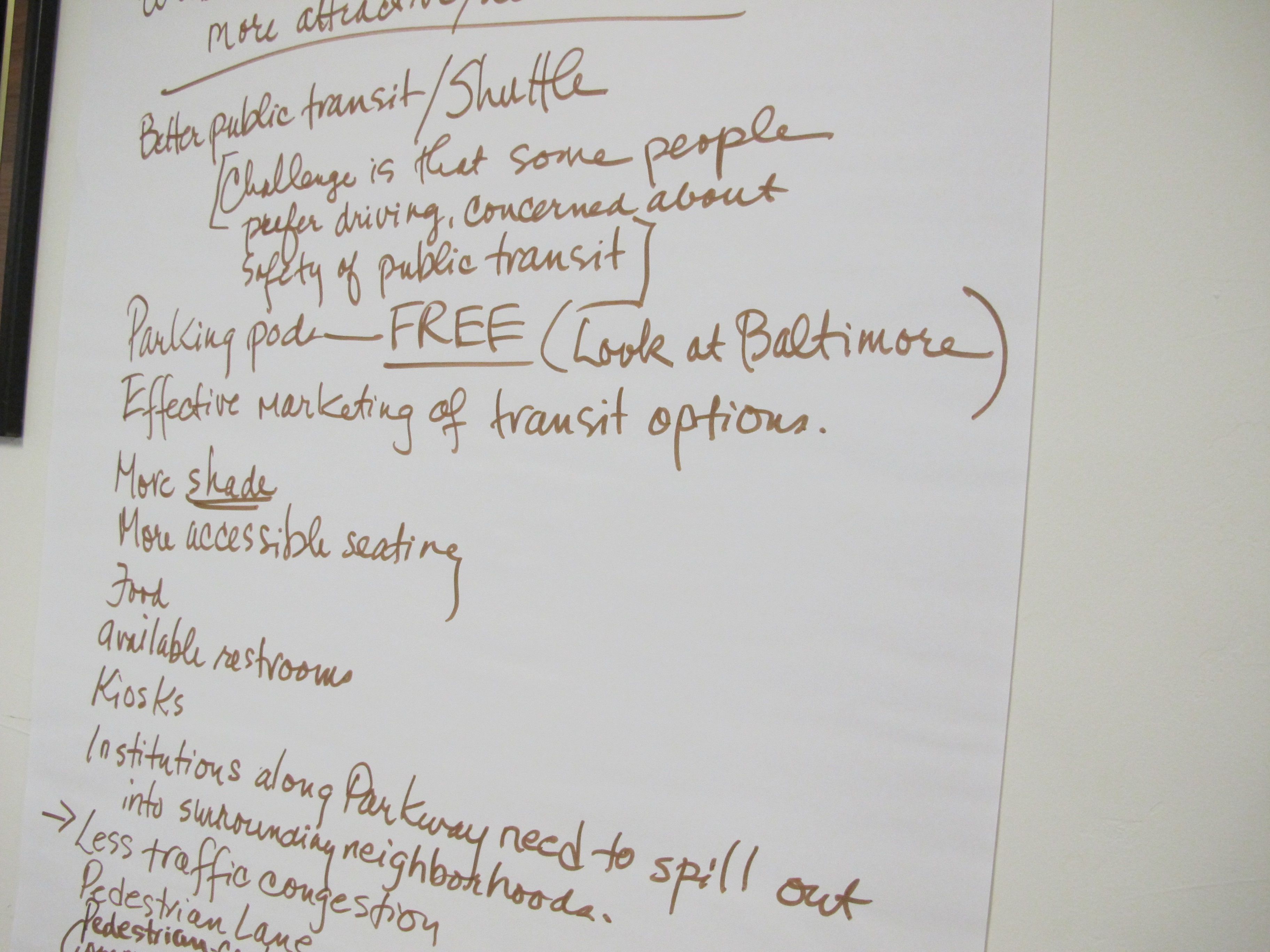Benjamin Franklin Parkway Action Plan gets under way
The Benjamin Franklin Parkway Action Plan became real Monday night as the first of four community meetings was held with the goal of developing a strategy for the Parkway that is based on civic engagement and, ultimately, leads to a set of projects that can be funded and implemented in the next few years.
Michael DiBerardinis, Commissioner of the Department of Parks and Recreation; Harris Steinberg, of PennPraxis; and Harris Sokoloff, from the Penn Project for Civic Engagement, led a moderated discussion with Francisville neighborhood residents that is designed to develop some initial guiding principles for projects which can be actionable in the next few years and projects that help to improve/enhance connections to neighborhoods. The ideas that are generated out of this project will have a structure and core groups of leaders to help make them happen.
- Task 1: Who are the users and stakeholders of the Parkway, between Logan Circle and the Art Museum – focusing mostly on the public spaces? That is, who has an interest in what happens on the Parkway?
- Task 2: Who doesn’t use the Parkway? What groups (demographic, geographic, etc.) don’t you see using the Parkway? And why do you think they do not use it?
- Task 3: What do people currently do along the parkway? What other things would you like to do, or do you think others might want to do along the parkway? Which of these “other uses” might count as the kind of “early action” that would lead you and your friends to visit the Parkway more often?
- Task 4: As you think about these users and what they do along the Parkway, why is the Parkway important?
- Task 5: If we can’t all of the projects you described in Task 2, which one(s) should we do first and why?
- Bonus Task: What are the barriers to current use or to possible uses? What stops you? What stops others you know?
As a result of doing tasks 1-5, each group produced the following products (most common products are in parenthesis):
A list of users, and what’s important to them (skateboarders, museum goers, tourists, students, the homeless, seniors, suburbanites). Folks come for amenities.
A list of non-users and why they don’t use the Parkway (residents, shoppers, folks who fear traffic, dating couples, families, seniors). Too much congestion, boring stretches, no nightlife.
A list of possible uses, or early action items, and a sense of the barriers to different uses (Read, eat lunch, play in the water, feed homeless, picnic, pass through, hang on Rocky steps, bike). Too many cars and lanes of traffic. Too little in way of seating, restrooms.
Dates and Locations of remaining meetings
All Meetings: Registration 6:00 – 6:30PM. Program 6:30 – 8:30PM
RSVP: Praxis@design.upenn.edu
Questions? Contact Penn Project for Civic Engagement at 215-898-1112
July 24th at the Pennsylvania Horticultural Society
100 N. 20th Street – 5th Floor
July 30th at Olivet Convenant Presbyterian Church
22nd and Mt. Vernon Street
July 31st at Next American City Storefront
2816 West Girard Avenue
(see attached flyer for more information about the community meetings)
In addition to being led by Parks & Recreation, City Planning Department, the Art Museum, PA Horticultural Society, and Center City District are also providing their leadership. These partners have proven records of collaboration to get projects done.
WHYY is your source for fact-based, in-depth journalism and information. As a nonprofit organization, we rely on financial support from readers like you. Please give today.



